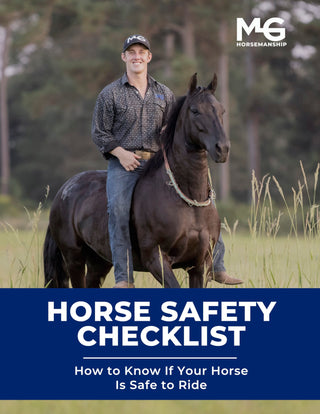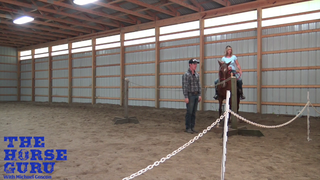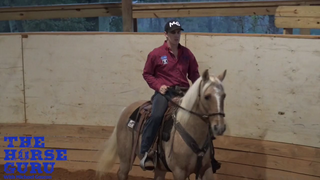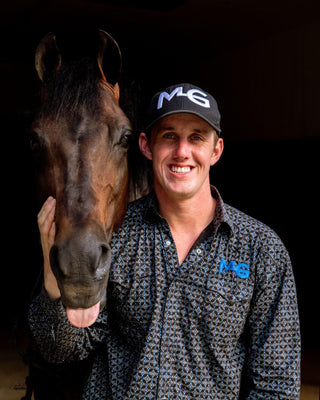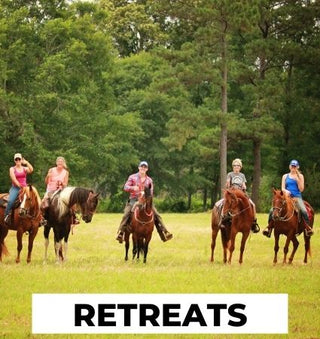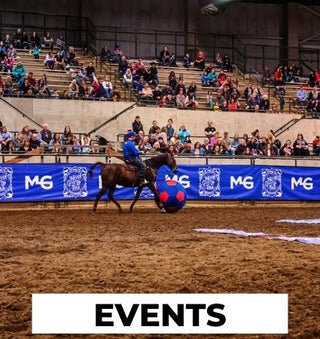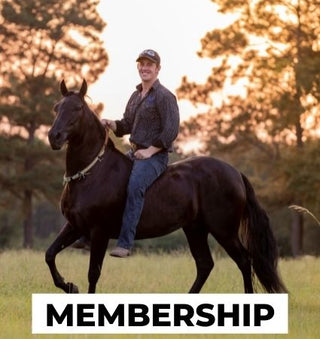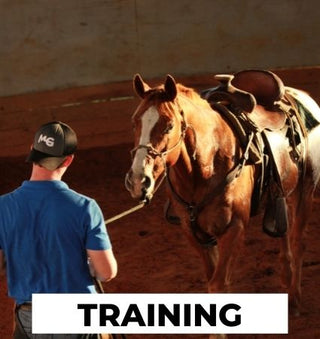Watch the Video Here or continue reading below!
When it comes to horse training, teaching respect and control doesn’t stop at standing still. While flexing and desensitizing exercises on the ground are valuable, they won’t prepare you for what happens when your horse spooks out on the trail or under saddle. That’s why 3rd Grade Horsemanship focuses on desensitizing in motion—ensuring your horse can stay calm, responsive, and respectful even when something unexpected happens.
Why Desensitizing at a Standstill Isn’t Enough
Think of it this way: having a steering wheel and brakes in a parked car does you no good. They only matter when the car is moving. The same applies to your horse. Desensitizing while standing still is only the beginning. The real test is whether your horse can handle pressure, distractions, and scary objects while moving at the walk, trot, or canter.
If your horse spooks, runs through pressure, or tries to take control while in motion, that tells you one important thing: they’re not ready to be ridden safely.
The Purpose of Desensitizing in Motion
Desensitizing in motion is about testing your horse’s focus, respect, and willingness to stay connected to you, even when fear kicks in.
-
If a tarp on their back makes them bolt blindly, that horse is telling you, “I won’t listen if I get scared under saddle.”
-
If they can stay soft, move around you, and give you their attention while something noisy or scary is happening, then you know they’re ready to handle real-life riding situations.
This groundwork exercise isn’t just about calmness—it’s about safety. It helps prevent dangerous run-offs, bolting, or losing control when you’re riding.
Pro Tips for Success in 3rd Grade Horsemanship
1. Desensitize in Motion, Not Just Standing Still
Standing still with a scary object isn’t the final result—it’s just the introduction. The real goal is for your horse to move calmly with distractions while still respecting your cues. A horse that can trot or canter with focus, even when startled, is a safe and reliable partner.
2. Always Maintain Respect and Control
Some horses will freeze when scared but take off the moment their feet move. If this happens, fix it on the ground before you ever get back in the saddle. Redirect them, stop them, and try again until they understand that you, not fear, are in charge.
This step saves riders from being caught off guard later. Many horse owners only discover a lack of respect during a clinic or, worse, during a spook on the trail. By asking these questions now, you keep yourself safe later.
3. Keep Your Bubble for Safety
Always protect your personal space. Maintain a safe “bubble” between you and your horse so that if they react, you have room to redirect them or step aside. This not only keeps you safe but also reinforces respect.
Being able to read your horse before they explode—catching the signals early—is key to preventing accidents.
What Desensitizing in Motion Tells You About Your Horse
Every exercise in this stage is a way of asking your horse questions:
-
Will you still listen to me when you’re scared?
-
Can I stop you and back you up when you want to run?
-
Do you respect my space, even under pressure?
If the answer is “yes,” then you’re building a horse that’s confident, reliable, and safe to ride in any environment. If the answer is “no,” then the groundwork gives you the tools to fix it before it becomes dangerous.
Final Thoughts
3rd Grade – Desensitizing in Motion is where you truly find out what kind of horse you’re working with. It’s not about making a horse fearless—it’s about teaching them to look to you for guidance instead of reacting blindly.
By practicing these exercises, you build a horse that can:
-
Stay calm when startled
-
Respect your cues under pressure
-
Keep both you and them safe in real-world situations
This step in horsemanship is not just about training—it’s about safety, trust, and partnership.



